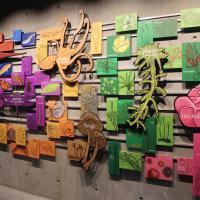Online Museum Collections Tour
Join us online to virtually explore the six collections that make up the museum: Tetrapods, Marine Invertebrates, Herbarium, Entomology, Fish, and Fossils. Discover stories about BC species, biodiversity research, and different specimens in the collection and how they relate to each other.
This introductory online tour will teach you about some of the different specimens in the collection, and showcase some of our Museum Interpreters’ favourite specimens and stories. After a virtual tour, you will have time to ask questions.
Tour Length
Online tours are 60 minutes long. The online program includes up to 15 minutes for a tech-test with the organizer, students, and facilitator before the program begins, plus 45 minute program time, which includes time for student questions and discussion.
When you click the zoom link, you will be taken to a waiting room. The organizer will be let in first, so we can quickly touch base about the program. Then, students will be allowed into the zoom room where we can check that things are set up and working smoothly before we begin. The main organizer can sign on a few minutes before the scheduled start time (up to 5) if preferred.
Booking Times
Online tours are booked using our online booking form and follow our regular booking policy and procedures
Class Size & Management
A maximum of 30 participants per booking makes for an optimal experience. We will expect the adults responsible for the group to provide group management and facilitate the Q&A portion. The amount of time for individual students to ask questions and interact will depend on the number of students in the call.
For more information: https://beatymuseum.ubc.ca/learn/online-museum-collections-tour/







